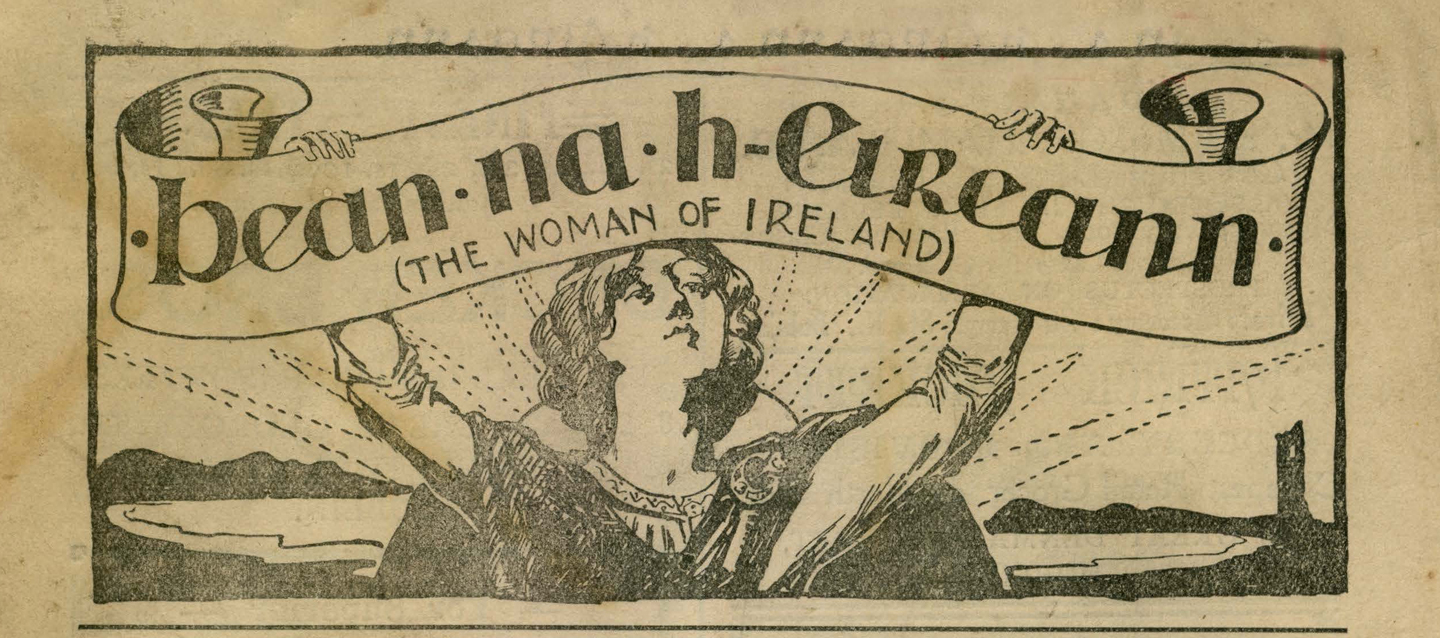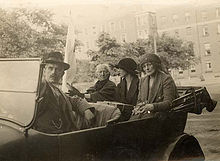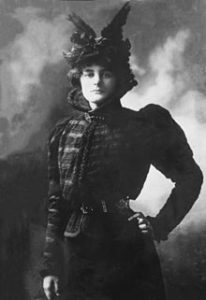 Maud Gonne was born in England in 1866, as the daughter of a British officer. When her father died, she turned away from her Unionist family and committed herself to fighting for Ireland. She was awarded the reputation as the most beautiful woman in Ireland.
Maud Gonne was born in England in 1866, as the daughter of a British officer. When her father died, she turned away from her Unionist family and committed herself to fighting for Ireland. She was awarded the reputation as the most beautiful woman in Ireland.
Her good looks were used in the portrayal of Kathleen na Houlihan in W.B Yeat’s nationalistic play about Ireland, which tugged at the heartstrings of Irish citizens across the country and called them to action. Gonne also contributed greatly to the woman’s suffragist movement through her creation of Inghinidhe na hEireann and the Ladies Land League. She was also a major part of nationalist groups like the Women’s Peace Committee and the Women’s Prisoner Defense League.
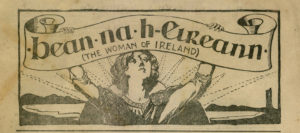 Maud Gonne was a highly talented writer and actress, who, upon denial of admittance into the Celtic Literary Society due to her gender, had created her own literary nationalist group, Inghinidhe na Eireann. The creation of this group in 1900 was then followed by their own paper, Bean na Eireann, or “Daughters of Ireland” which ran from 1908 to 1911 and was edited mainly by Helena Molony. In 1914, Inghinidhe na Eireann would merge to become a branch of the Cumann na mBann.
Maud Gonne was a highly talented writer and actress, who, upon denial of admittance into the Celtic Literary Society due to her gender, had created her own literary nationalist group, Inghinidhe na Eireann. The creation of this group in 1900 was then followed by their own paper, Bean na Eireann, or “Daughters of Ireland” which ran from 1908 to 1911 and was edited mainly by Helena Molony. In 1914, Inghinidhe na Eireann would merge to become a branch of the Cumann na mBann.
 Gonne bounced between France and Ireland, finally marrying John MacBride in France in February 1903. Despite her travels, members of the group contributed to the Irish nationalist movement through appeals to women and their untapped strength. Later, the Celtic Literary Society saw the success of Gonne’s Inghinidhe na Eireann, that they extended admission opportunities to women.
Gonne bounced between France and Ireland, finally marrying John MacBride in France in February 1903. Despite her travels, members of the group contributed to the Irish nationalist movement through appeals to women and their untapped strength. Later, the Celtic Literary Society saw the success of Gonne’s Inghinidhe na Eireann, that they extended admission opportunities to women.
Gonne had been in support of the Rising plans, keeping herself up to date with contact through other prominent figures in the Rising. After the rebellion had been quashed by the British and surrender had been negotiated, she was apprehended and sent to Holloway Jail in May 1918 alongside Markievicz, Sheehy-Skeffington, and Clarke. Gonne was released in October of 1918 as influenza began to sweep Europe and she became fatally ill.
In 1922, Gonne formed the Women’s Peace Committee in order to stop the outbreak of civil war between Northern and Southern Ireland. She called for a cessation of fire and fighting until the matter could be calmly discussed by Parliament. When martial law was declared and people were being unjustly arrested without trial, she initiated the Women’s Prison Defense League which worked closely with the Cumann na mBan to investigate newly imprisoned people and send them food and clothing if necessary. Many of the women who joined this league were the mothers and grandmothers of the men who had been arrested without trial.
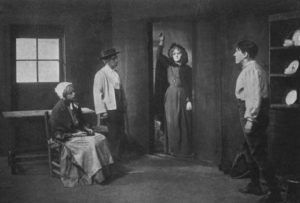
Like other famous Republican women, Maud Gonne greatly benefited from her English-born high social class reality and her constant symbolization by Ireland and the men around her. Painted by Yeats as an unobtainable image of beauty and as the epitome of what Ireland should be (fiercely independent, but benefiting from ascendancy blood) she became a symbol of something more than herself. Objectified in Cathleen ni Houlihan, she was both the old woman representing Ireland and the “girl with the walk of a queen” offstage.
Gonne used these objectifications to her advantage and harnessed some of that fame to legitimately influence the Rising. Through the founding of the Inghinidhe na Eireann, Gonne contributed significantly to the Rising both symbolically and materially. This shows both great agency as well as the advantages of a highly opportunistic social class.

